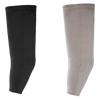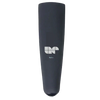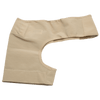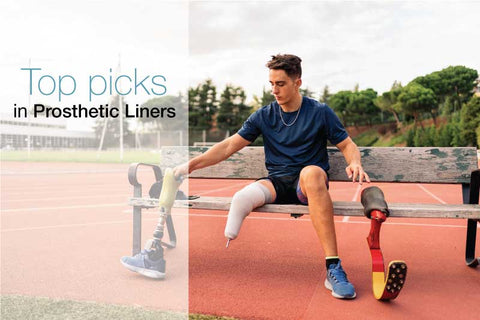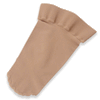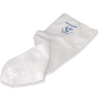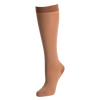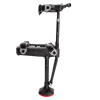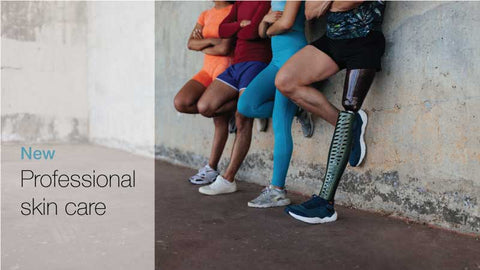Meet the Odyssey iQ: The Microprocessor Foot for Active Lifestyles
Reading Time: 5 minutes
___
Summary:
-
Odyssey iQ is a microprocessor prosthetic foot for active users
-
Designed for K3/K4 amputees navigating slopes, ramps, and varied terrain
-
Features hydraulic ankle, sensor tech, and College Park Industries’ proprietary Intelliweave composite material technology
-
Lightweight, low-profile, IP67-rated for real-world durability
-
Connects to the mobile app for setup, gait tuning, and step tracking
___
For active prosthetic users looking for advanced prosthetic feet, College Park Industries’ Odyssey iQ stands out as a compelling choice. Designed for prosthetic users who don’t want to compromise mobility, comfort, or aesthetics, this microprocessor-controlled foot balances durability and agility.

In this article, we explore what the product promises, what it delivers, and key points to consider before making your decision.
What is the Odyssey iQ Microprocessor Prosthetic Foot?
The Odyssey iQ is a microprocessor-powered prosthetic foot designed for active prosthetic users (K3 or K4 level users) who walk at varied speeds, navigate slopes, ramps, or uneven terrains, and want a device that supports rather than restricts their movement.
Unlike many prosthetic feet that rely on static or semi-active mechanisms, the Odyssey iQ employs sensors and algorithms to dynamically adjust in real time, helping users walk more confidently and with less mental effort.
Key features
The Odyssey iQ features intelligent microprocessor control with onboard sensors that adapt in real time, ensuring smoother transitions, better toe clearance, and a reduced risk of tripping. It includes a hydraulic ankle with up to 12° of motion, improving slope response, ground compliance, and gait efficiency.
College Park Industries’ Intelliweave composite technology keeps the foot lightweight and durable, providing good energy return for active prosthetic users needing performance. Unlike typical 2D carbon fiber layers, Intelliweave features a unique 3D, hand-woven pattern that enables engineers to precisely target strength and flexibility areas within the foot. This creates a lighter, more natural-feeling prosthetic that lessens impact on the user’s residual limb and socket.
Furthermore, its low-profile design allows for a smaller build height, accommodating users with longer residual limbs or complex socket shapes without significantly raising the prosthetic knee.
Weighing just over 2.5 lbs, the Odyssey iQ reduces fatigue, making it ideal for extended walks or daily use, and is lighter than many comparable microprocessor feet. The rugged IP67 rating protects against dust, sand, dirt, and temporary water immersion, making the foot suitable for outdoors.
Additionally, the foot connects to the Stride Studio mobile app for adjustments, step counting, and gait calibration, with a Setup Wizard to assist clinicians.
Specifications
|
Mounting |
Endoskeletal (Internal Pylon) |
|
Impact Level |
Low-High |
|
Weight |
1,027 g |
|
Size Range |
23-30 cm |
|
Hydraulic Range of Motion |
2.5° - 9.5° |
|
Weight Limit |
275 lb (125 kg) |
|
Build Height |
23-25 cm | 3.5 in (8.8 cm) |
|
IP Rating |
IP67 |
|
Battery Life |
All Day |
|
Warranty |
3 years (3-year extension available) |
Things to consider (and ask your prosthetist)
Before deciding to get the Odyssey iQ, here are a few important points you might want to consider:
-
User-level suitability: The foot is marketed as ideal for K3 or K4 level users or those with varied cadence, ambulatory ability, and goals beyond basic walking. If your activity level is lower, you might want to check out simpler, less expensive alternatives.
-
Maintenance and setup: The hydraulic and microprocessor features are beneficial but may require more regular maintenance, calibration, and possibly battery management or firmware updates.
-
Insurance and coverage: As with advanced prosthetic feet, coverage varies by region, plan, and provider. It’s best to consult your prosthetist about insurance and budgeting for potential additional costs for maintenance and updates.
-
Real-world trade-offs: While the low build height is beneficial, you should confirm that your prosthetic socket/limb setup doesn’t compromise clearance or proper alignment. Similarly, although the weight reduction helps, you may still feel the foot is heavier or different from non-microprocessor options, particularly during initial use.
-
User training: Even the finest prosthetic foot benefits from gait training, practice on slopes and ramps, and real-life experience over time. The technology helps, but it doesn’t replace adaptation and conditioning.
The bottom line
If you’re looking for a prosthetic foot that supports rather than restricts an active lifestyle, the Odyssey iQ presents a compelling option. It combines sensor intelligence, hydraulics, a low-profile design, durability for various surfaces, and an app for tuning. Simply put, it’s built to let the user walk and move in varied environments, rather than simply stand and shuffle.
But the question of whether it’s suitable for you or not depends on your functional level (K3-K4), activity goals (do you often navigate slopes, uneven terrain, or long distances?), maintenance and budget considerations, and the specifics of your prosthetic socket/limb alignment.
If this type of mobility aligns with your goals, consult your prosthetist about the Odyssey iQ. Ask about trial options, earlier user feedback, maintenance routines, and how it fits into your daily walking, ramp and stair use, and terrain navigation.
The technology shows promise—the real question is how well it works for you.
Related reading:
How Microprocessor Feet Improve Mobility
Anthem Now Covers Microprocessor-Controlled Lower-Limb Prostheses
Transforming Lives: The Impact of Microprocessor Knees on Amputees in Wales

